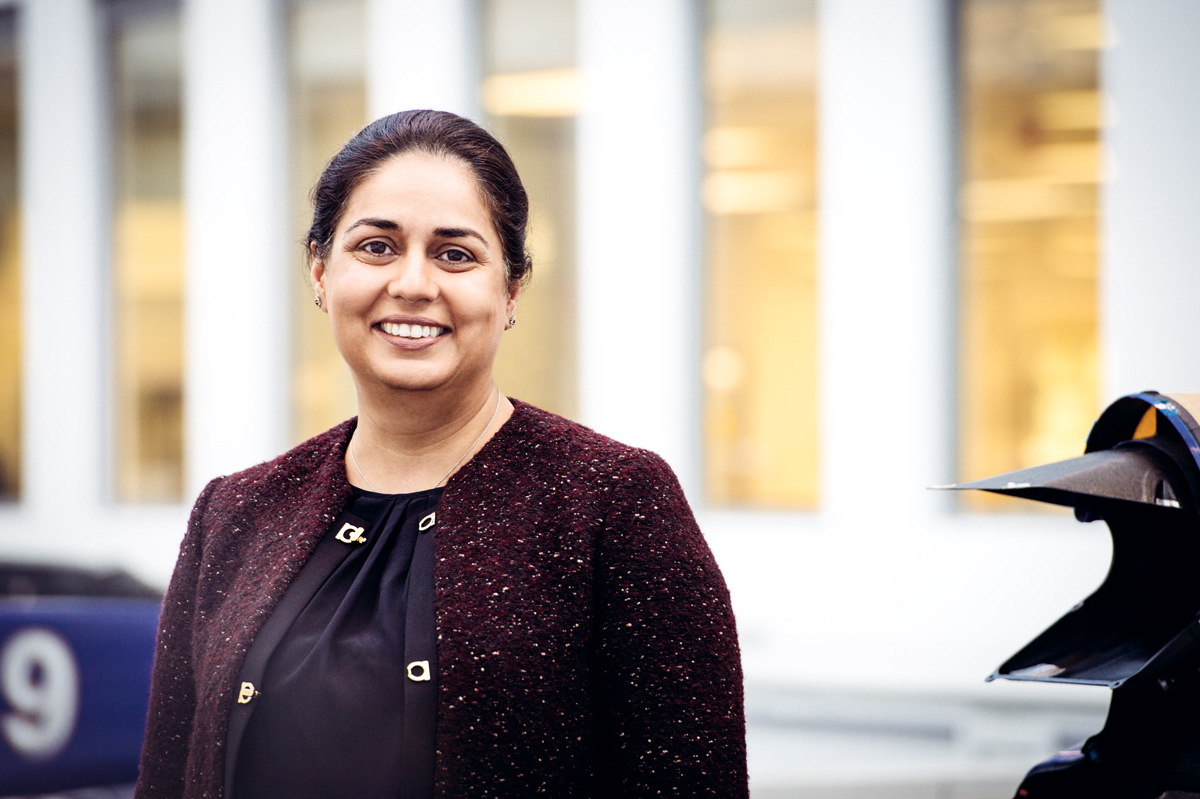Formula One® racing is a sport that thrives on shock announcements; after all, commentators and fans alike are still reeling from Nico Rosberg’s bombshell retirement news, delivered only days after winning the 2016 Driver’s Championship in Abu Dhabi
last November.
Every season brings its fair share of headline-grabbing stories. Less than 5 years after acquiring the majority share of racing team Sauber, BMW’s decision to leave the sport in 2009 was one such moment. In the aftermath, Peter Sauber announced he was buying back the team he founded in the 70s, and offered Monisha Kaltenborn the opportunity to become its CEO.
“To be honest, I didn’t have much time to think about it,” Monisha reflects. “It all happened towards the end of the year, and at that time we didn’t even have an entry for the following year yet we were building a car. So it was a very quick decision. I knew the team’s only chance of survival was to try to keep the people together, fight for that seat and make sure we had a car running the following year, even with only very few sponsors onboard.” Looking back, she admits it was a daunting situation. “But that was the challenge for me. You always have to find hope in the impossible.”
The first female team principal
A law graduate from the University of Vienna, with a Master’s degree in International Business Law from the London School of Economics, Monisha grew up during an era of Austrian dominance of the sport. “Formula One used to always receive a lot of coverage in the media, so I was interested in the sport, but not one of those hardcore fans,” she laughs. Initially involved in a legal capacity, she was appointed to the team’s management board in 2001, before her appointment to the position of CEO of Sauber Motorsport in 2010. Upon Peter Sauber’s retirement in 2012, she became Team Principal, the first female to hold the role in the history of the traditionally male-dominated sport.

She still doesn’t consider herself a fan today, although the sport is her passion. “I guess as a fan you focus on different things. For me, this is a round-the-clock job. It really determines your entire life. You have to revolve around it, work around a calendar where you don’t get to choose where to go when. It affects everything in your life, and you need a lot of passion for that,” she says. “Although there is, of course, the business side to it where you can be a bit less emotional.”
Engineering excellence
Her role as team principal may require her to be trackside at every race on the calendar, but when she is back at headquarters in Switzerland, she says, “I guess my day-to-day is not very different from any other CEO”. In July 2016, the team was acquired by Longbow Finance S.A., and the current focus is on further establishing Sauber Motorsport as a Swiss name renowned for engineering excellence. “We are more than a Formula One team,” says Monisha. “While it is the core of activities and we generate our know-how at our Hinwil headquarters, we can apply our experience, our efficiency procedures to other areas.” The UK may be Formula One heartland, “but we don’t believe our Swiss location to be a disadvantage; in fact, the opposite,” she counters.
“It has meant we have built up many things in-house that other teams outsource. This has actually enabled us to establish a third-party business because we have these additional competences.” Identifying aerodynamic simulation and 3D printing as 2 areas of particular strength, she emphasises the potential for the company to apply the technologies developed internally to other sectors in racing and outside motorsport. “We see ourselves growing and expanding much more into providing high-end engineering services.
“We see ourselves growing and expanding much more into providing high-end engineering services.” – Monisha Kaltenborn
Drive for success
“Of course, on the Formula One side, a short-term target is to return to the top of the midfield in the rankings,” she continues. The team’s 2016 drivers, Brazil’s Felipe Nasr and Sweden’s Marcus Ericsson, finished 17th and twenty-second in the Drivers’ Championship respectively, while the team finished 10th (out of 11) in the Constructors’ Championship. Monisha has grown to accept the inevitable ups and downs that come with the territory. “Our business is not like most other businesses; we cannot usually work to a 5-year plan.”
In the years since Sauber’s Formula One debut at the 1993 South African Grand Prix, the team has partnered with brands such as Red Bull, Credit Suisse and BMW. “We are a very strong brand in our own right, but our selling point is that we don’t dominate the other brand, which is why a lot of companies in the past have chosen us for their entry into the sport. They can benefit from our values, yet the attention isn’t taken away from them.” Monisha cites the Malaysian oil and gas company Petronas as an example, whose partnership with the team in 1995 marked its first foray into Formula One. “We offered a platform for the brand to instantly become recognised,” she says. Today, the Petronas logo dominates the Mercedes cars of Rosberg and team-mate Lewis Hamilton.
The current Mercedes-led dominance shows no sign of abating, but Formula One moves quickly. Monisha credits her team’s stubbornness for the way it has managed to survive in the sport for nearly 4 decades. “I don’t want our team to be reduced to the 2 bad years we have had recently because there were many, many good years before.” With a determined CEO in the driving seat, it’s easy to predict many more successes to come, on and off the track.



